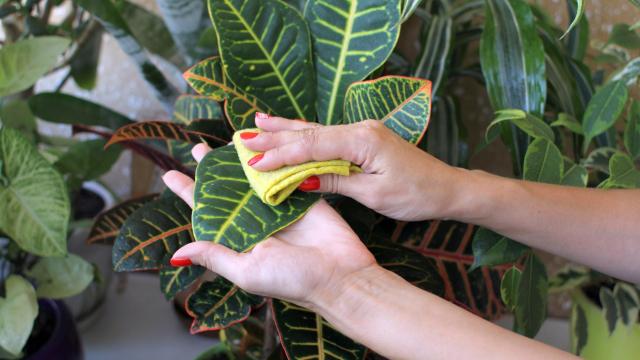When your house is a disaster, the last thing you are thinking about is cleaning your plants. But houseplants get dirty and dusty just like anything else in your home, even if cleaning them requires some specialised knowhow. Many cleaning products (and even gentle soaps) can damage a plant’s leaves and roots, so it’s worth knowing how to spruce them up without causing lasting harm.
Why you should clean your plants
Plants’ leaves can gather dust just like any other surface, and if it builds up enough, it can actually block the light from getting through, preventing the process of photosynthesis. It seems far-fetched, but scientific studies have shown dust can indeed affect a plant’s ability to feed itself. Dust can also hide common signs of disease or infection; keeping the leaves clean will help you identify and treat any issues before they kill your previous plant friend.
So how often should you clean your plants?
When to clean your plants depends on the type of plant, how dirty it is, and the airflow in your home. Apartment Therapy suggests giving the leaves a once-over during each watering. If there is a film of dust present, it is time for a cleaning. If you have a generally dusty home or keep the windows open often, you may need to clean your plants on a more regular basis. Otherwise, cleanly weekly or bi-weekly should suffice.
How to clean plant leaves
When it comes time for a cleaning, you’ll need to use different tactics for different types of plants. Smaller plants can be carefully dunked into a sink to remove light coatings of dust. Be careful when turning the plant over so as not to displace it from its container or tear it from the roots, and lightly swish the leaves back and forth.
Most of the time, you can wipe down the leaves of larger plants with a microfiber cloth dampened in lukewarm water, beginning with the top- and innermost leaves and moving gently from stem to tip, but that is difficult for, say, a cactus. In these cases, a feather duster works well. Make sure to clean the underside of the leaves, where insects like to lay eggs, and use a different cloth for each plant so you are not spreading any contaminants to other plants in your house.
Once you are done with the leaves, brush the stems and give the pots a quick wipe as well. Avoid using chemicals and soaps, which can harm the leaves and roots of your plants. If you want to keep bugs at bay, Apartment Therapy suggests gently rubbing the leaves with a banana peel; the peel will remove the dust and leave behind a film that can effectively repel aphids.

Leave a Reply
You must be logged in to post a comment.